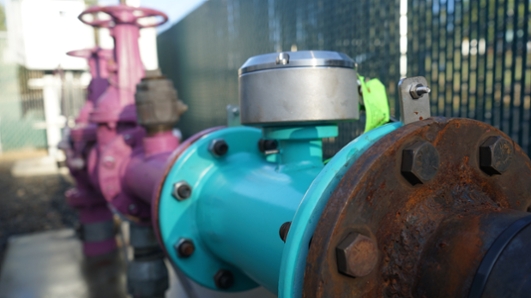- PRODUCTS
- INDUSTRIES
- RESOURCES
- SUPPORT
How Small Utilities Can Afford To Reap The Benefits Of Large District Metering Solutions
Water scarcity issues and increased production costs are putting more pressure than ever on small water utilities, which tend to rely on relatively few personnel to deliver a quality, affordable product to consumers. Simultaneously, getting a grip on water loss in the distribution system and operational inefficiencies can be outsized burdens because of their limited resources.
Access to robust data provides a significant benefit to any municipal water system — even those with small plants, a limited customer base, and just a few people running the whole show. However, many small utility managers have a hard time justifying costly investment in data management solutions for an operation of their size.
The reality is that the investment in proper flow metering technology and resulting data can help ensure that water quality and service in smaller communities remain on par with larger systems while optimizing revenue.
Where To Start
Having immediate access to flow data, and the ability to manipulate it, can make a limited staff much more efficient. This starts with the proper flow meter solution.
Electromagnetic flow meters, also known as mag meters, are highly accurate devices with a longer life span compared to other meter technologies. Mag meters are also accurate at the low flow rates that are common for smaller systems and contain no moving parts, so they are virtually maintenance-free.
In addition to using optimal metering technology, proper placement of the meters is important to obtaining useful data. Unfortunately, smaller utilities often monitor water leaving the main treatment facility, but not the product going from pump facilities to neighborhoods, so they lack critical insight into where there might be an issue.
Meters should be placed strategically to determine how much water is making it through each phase of the distribution system, including the water source intake, the point at which water goes into the distribution system, and key points along the route to customer taps. Setting up district metered areas (DMAs) can also be helpful to getting a better grip on non-revenue water, or NRW. DMAs are defined areas within a distribution network that allow systems to analyze synchronized production and consumption data to identify and isolate leaks.
Additionally, accurate metering can be used to fine-tune the treatment process by ensuring water managers are not spending too much money by adding excessive disinfectants or risking fines and quality problems by not dosing enough.
Collecting Data With Ease
The amount of data that needs to be collected and crunched may feel overwhelming, but that’s where remote monitoring comes in.
For example, mag meters from McCrometer are designed with Smart Output, a highly intelligent module in their transmitters that allows popular communication protocols, like Sensus and Itron, to transmit flow data via radio. This capability allows McCrometer mag meters to transmit data on a schedule or on demand, as well as receive diagnostic queries to ensure or update meter operation, so there’s no need for technicians to gather flow data manually or check meter status.

An Ultra Mag installed in a municipal application, is available with Smart Output. Courtesy of McCrometer
McCrometer has also recently launched its new bundle for mag meter telemetry in the form of mounted RTUs (radio transmission units) utilizing Verizon and AT&T protocols. As a result, even without an expensive SCADA system that might be found at a larger water utility, small systems can still get big benefits from the data they collect.
The Business Case
Small utility system managers may feel like they don’t have the budget or the technical ability to deploy metering systems like these, but that isn’t the case. For municipalities without a lot of revenue to invest in large capital projects, this technology can be installed in phases. As one phase begins to pay for itself, the savings can be rolled into the next step. All the while, solutions providers such as McCrometer provide the support necessary to implement projects and understand how to handle the data.
For example, a small water conservation district in the Southwest purchased roughly 50 McMag3000 meters with the intent of implementing telemetry capability in the future. The investment in long-lasting, accurate mag meters was made first, with a plan to implement mag meter RTUs once additional funding was secured.
Having a better grasp on what’s really taking place throughout the water treatment and distribution process helps boost efficiency, bring down production costs, promote sustainability, and improve customer service. An investment in meters can provide years of valuable data that can be the real difference to the bottom line.

